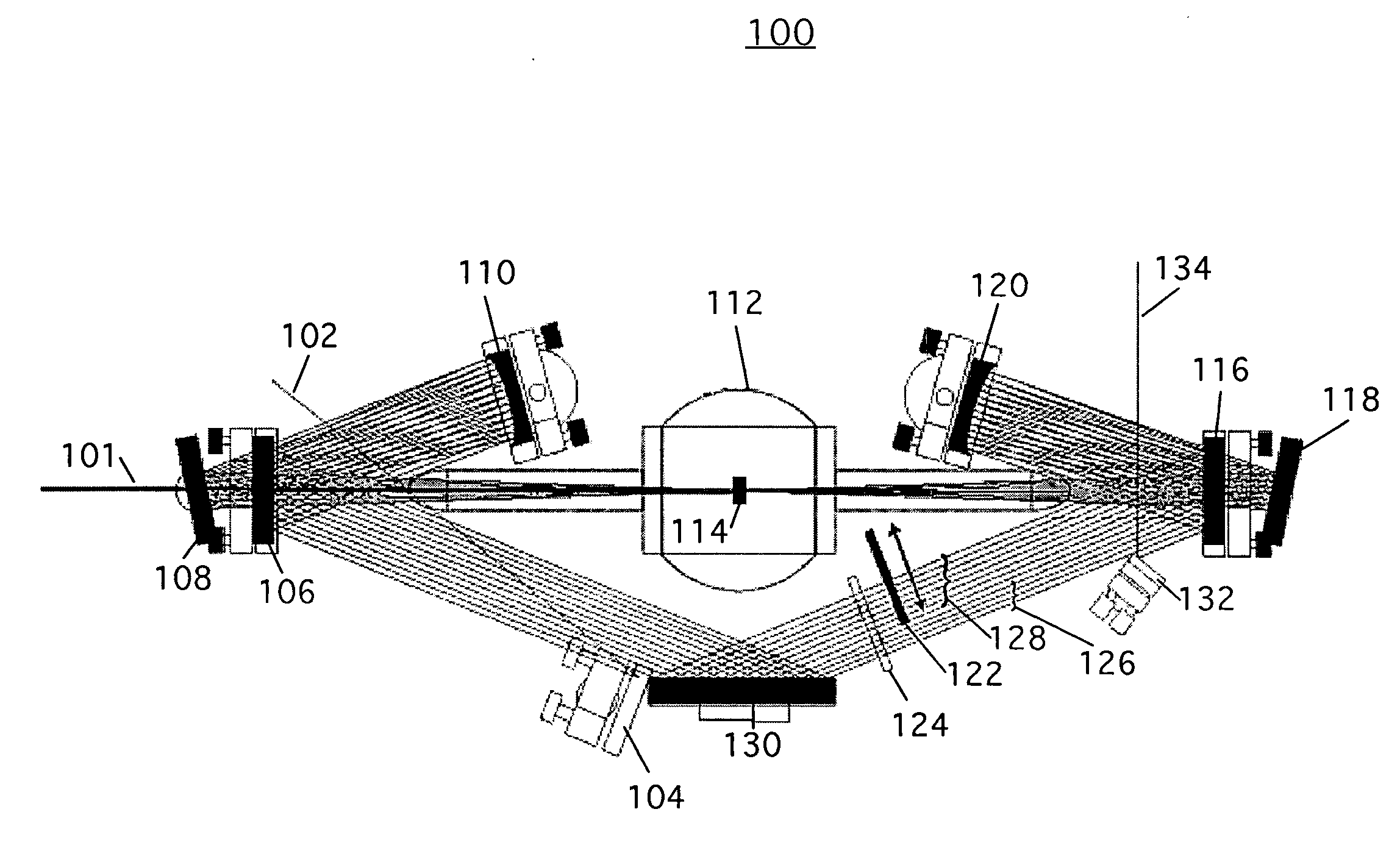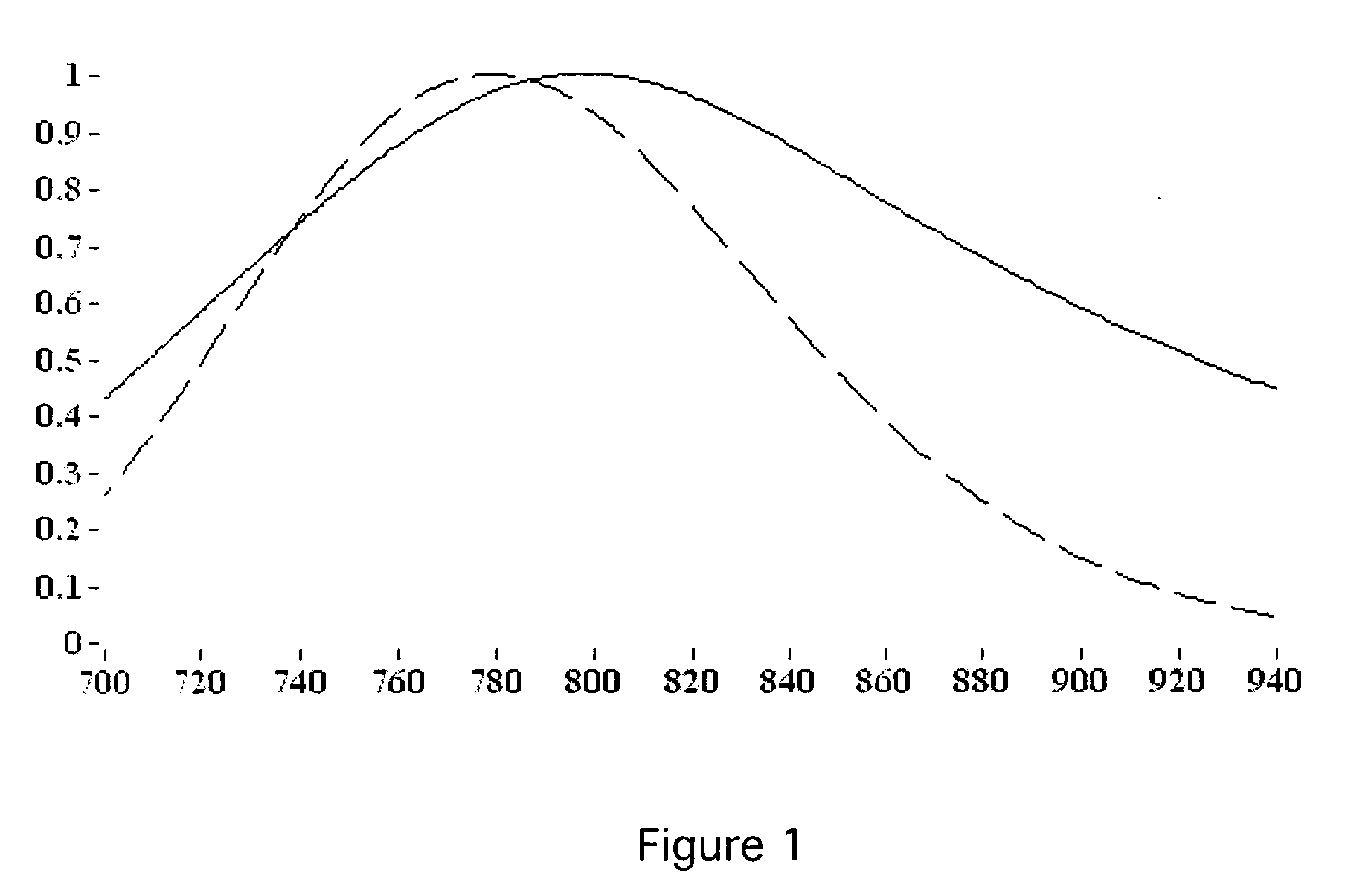Gain flattening filter for preserving the spectral bandwidth in cryogenic ultrashort-pulse laser amplifiers
a laser amplifier and gain flattening technology, applied in the field of gain flattening filters for laser amplifiers, can solve the problems of spectral narrowing, general undesirable, and gain narrowing, and achieve the effect of improving pulse shape and system gain
- Summary
- Abstract
- Description
- Claims
- Application Information
AI Technical Summary
Benefits of technology
Problems solved by technology
Method used
Image
Examples
Embodiment Construction
[0030]FIG. 2 is a block diagram of a preferred embodiment of a cryogenically cooled ultrafast ti:sapphire laser amplifier 100 using a gain flattening filter 122. The embodiment of FIG. 2 is a “multipass” amplifier configuration, wherein the beam shifts slightly in path with each pass, which allows the inclusion of an optional feature wherein filter 122 intersects the beam path for a variable number of passes—i.e. it intersects the first several passes 128, but the last several passes 126 bypass the filter. The final pass intersects output mirror 132 and is diverted out of the amplifier as output pulse 134.
[0031] Ultrafast laser amplifier system 100 takes an ultrashort light pulse 102, “stretches” it in time, then puts the beam through an amplification process that typically requires 8-20 passes through a laser crystal 114 to increase the output pulse 134 energy from ˜10−9 Joules to ˜10−3 J or higher. Pump beam 101 enters the system at the right in FIG. 2.
[0032] Input beam 102 refl...
PUM
 Login to View More
Login to View More Abstract
Description
Claims
Application Information
 Login to View More
Login to View More - R&D
- Intellectual Property
- Life Sciences
- Materials
- Tech Scout
- Unparalleled Data Quality
- Higher Quality Content
- 60% Fewer Hallucinations
Browse by: Latest US Patents, China's latest patents, Technical Efficacy Thesaurus, Application Domain, Technology Topic, Popular Technical Reports.
© 2025 PatSnap. All rights reserved.Legal|Privacy policy|Modern Slavery Act Transparency Statement|Sitemap|About US| Contact US: help@patsnap.com



